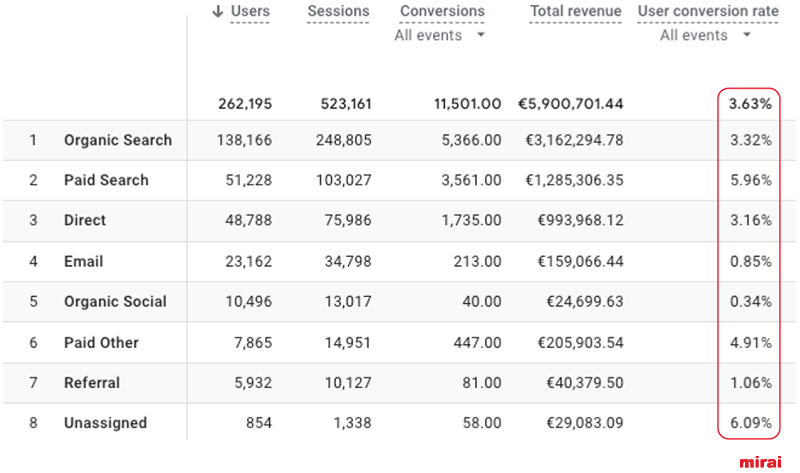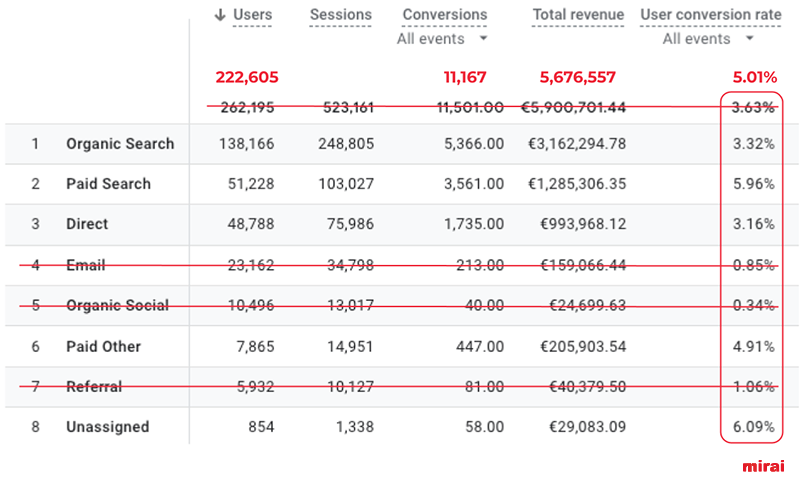Conversion rate has become a popular key metric for many hotels, and it is often included in executive reports and used to evaluate marketing directors or benchmarks across different hotels.
NB: This is an article from mirai, one of our Expert Partners
Vendors perceived this trend and invented the label “high conversion” for their products the same way Coca Cola made popular the “diet” label in the 80s. Every available product “boosts your conversion”, as if such a thing were easy. Is this obsession about conversion rate justified?
Subscribe to our weekly newsletter and stay up to date
Should conversion rate be an objective?
Expectation about “conversion rate” makes sense and, undoubtedly, it is a KPI that is both helpful and worth monitoring over time as it shows you where you may be having problems and offers clues as to how to fix them. However, does conversion rate drive your business or impact your P&L?
I have never encountered a hotel that profits from its conversion rate. Hotels generate profit from revenue minus running costs. Everything that drives revenue is a KPI worth following, and revenue comes from reservations, but does conversion rate necessarily lead to revenue?
According to the formula, there is a direct relationship between the conversion rate, the visits, and the number of bookings.
Conversion rate = Reservations / Visits
This can be rewritten as:
Reservations = Conversion Rate x Visits
Mathematically speaking there is a direct relationship between conversion rate, visits, and the number of reservations, and the higher any of these numbers are, the more reservations will result. This is the true KPI that should be set as an objective, rather than conversion rate. We should also ask, are conversion rate and visits truly independent of each other? Can we increase one without affecting the other? If only it were that easy.
Conversion rate varies depending on your source of traffic
If you check your Google Analytics you will find important differences in conversion rate depending on the traffic source, and these differences are logical, as each source generates customers at different stages of the conversion funnel.

Ideally, we would want all traffic to convert at the maximum ratio, but unfortunately this is not an option; and remember, we should welcome any traffic that generates bookings, whatever the conversion rate. If this traffic bears a cost, obviously you’ll have to do the numbers to make sure it’s profitable, but if your strategy is to focus exclusively on the conversion rate, you’ll be tempted to get rid of your lowest conversion traffic, thereby losing bookings along the way as we can see in this simulation, where you would be tempted to stop running social media and email marketing campaigns and you would increase your conversion by 38% to 5.01% in exchange for losing €185,000 of revenue on the way though.

Does your hotel offer meeting rooms or a popular restaurant? Your conversion will struggle… and there’s nothing wrong with that
Some hotels offer more than just rooms for guests, such as restaurants, wedding venues and spas open to the public, and receive substantial traffic from customers interested in these services. As a result their conversion rate is impacted, as Google Analytics is normally configured to only consider hotel reservations as conversions, as we can see in this example:




